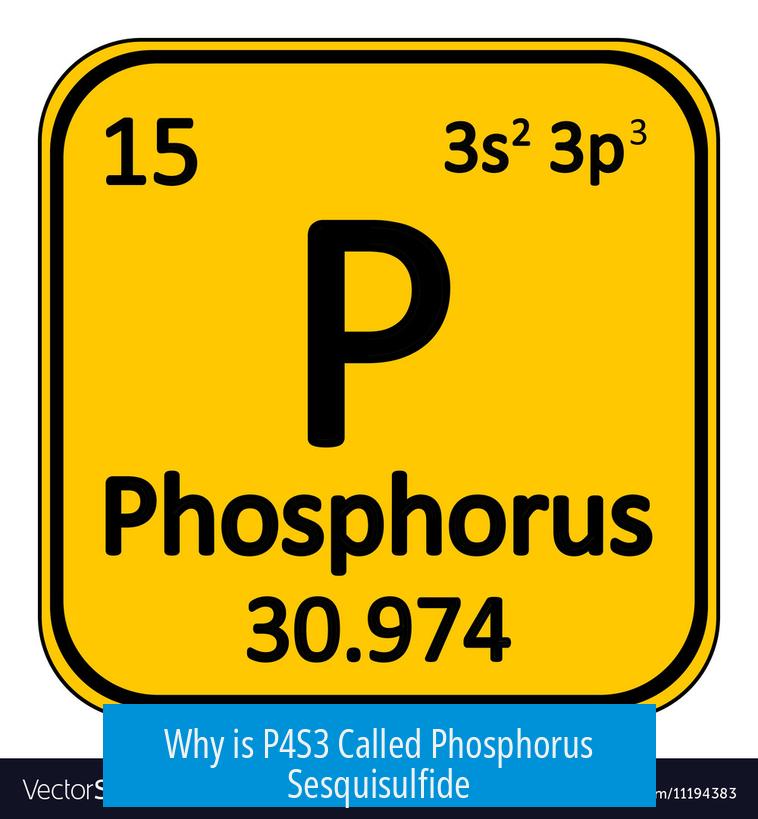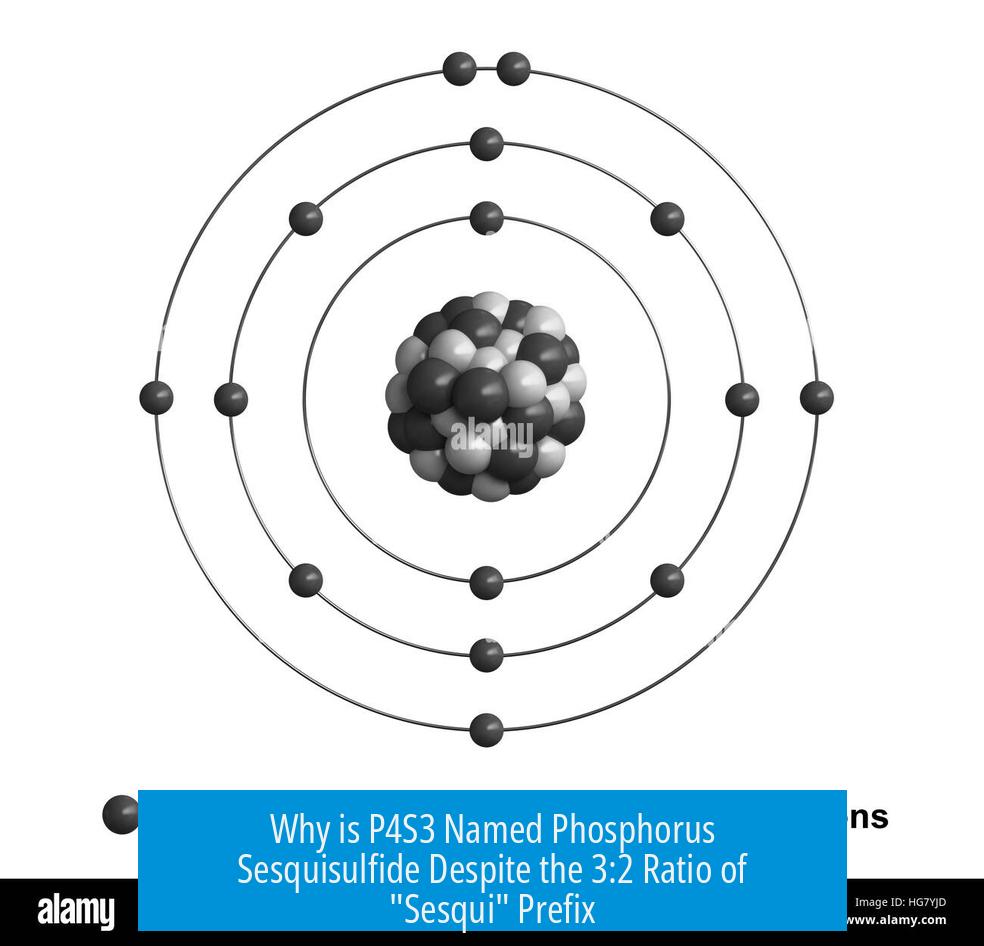Why is P4S3 Called Phosphorus Sesquisulfide?

The name “phosphorus sesquisulfide” for P4S3 is a historic, traditional name that predates accurate molecular formula determinations. The prefix “sesqui-” means “one and a half times” but does not necessarily imply a strict 3:2 atomic ratio in this case.
Historical Background of the Name
The name dates back to a time when chemists lacked precise methods to analyze compounds. Early experimenters isolated phosphorus sulfide used in matchsticks, and the formula was originally misunderstood. By the time the correct formula P4S3 was established, the name “phosphorus sesquisulfide” had already become entrenched in industry and literature.
This situation is similar to other phosphorus sulfides such as P4S10, historically called “phosphorus pentasulfide” due to the initial assumption that P2S5 was the molecular unit. Over time, these traditional names persisted despite improved chemical understanding.
The Meaning of the “Sesqui-” Prefix
The prefix “sesqui-” traditionally means “one and a half times.” In chemistry, this often indicates a ratio where one element is present at 1.5 times the amount of another. For example, aluminum oxide Al2O3 fits this pattern as three oxygens are 1.5 times two aluminums.
However, in phosphorus sesquisulfide, “sesqui-” does not correspond directly to an atomic ratio of 3 sulfur to 2 phosphorus atoms. Instead, the prefix is part of an older naming convention that loosely describes the compound’s composition without reflecting the precise molecular formula P4S3.
Modern Naming and Standardization
The International Union of Pure and Applied Chemistry (IUPAC) recommends using systematic names, such as tetraphosphorus trisulfide, for clarity and precision. These names reflect the exact number of atoms in the molecule and eliminate confusion from historic or trivial names.
Despite this, historically established names like phosphorus sesquisulfide remain in common use due to tradition, especially in industrial contexts.
Summary of Key Points
- “Phosphorus sesquisulfide” is an older, traditional name predating modern chemical formula analysis.
- The “sesqui-” prefix means “one and a half times,” but does not strictly dictate a 3:2 ratio here.
- The true molecular formula is P4S3, which the systematic name “tetraphosphorus trisulfide” clearly represents.
- IUPAC nomenclature discourages trivial and ambiguous names in favor of precise, unambiguous terms.
Why is P4S3 called phosphorus sesquisulfide despite its formula?
The name “phosphorus sesquisulfide” came before accurate formulas were known. It stuck because the compound was sold commercially using that name, especially in matches, even though P4S3 is the actual formula.
Does the “sesqui” prefix always indicate a 3:2 ratio in compounds?
No, “sesqui” means one and a half times, not a strict 3:2 ratio. For example, in Al2O3 it shows 1.5 oxygens per 2 aluminum atoms, but it doesn’t always reflect exact atomic ratios in other compounds.
Why were some phosphorus sulfides, like P4S3 and P4S10, named incorrectly?
Early chemists assumed simpler formulas like P2S3 or P2S5 as basic units. When later found to be P4S3 or P4S10, the old names stayed because they were already in use, causing these misnomers.
Should the name phosphorus sesquisulfide be used in scientific contexts?
It’s better to use IUPAC names like tetraphosphorus trisulfide. Colloquial names like phosphorus sesquisulfide are outdated and can cause confusion.
What does the sesqui prefix imply in chemical nomenclature?
It suggests “one and a half times” relative to the base unit, but isn’t fixed to a specific atomic ratio. The ratio can vary depending on the compound’s actual structure.





Leave a Comment